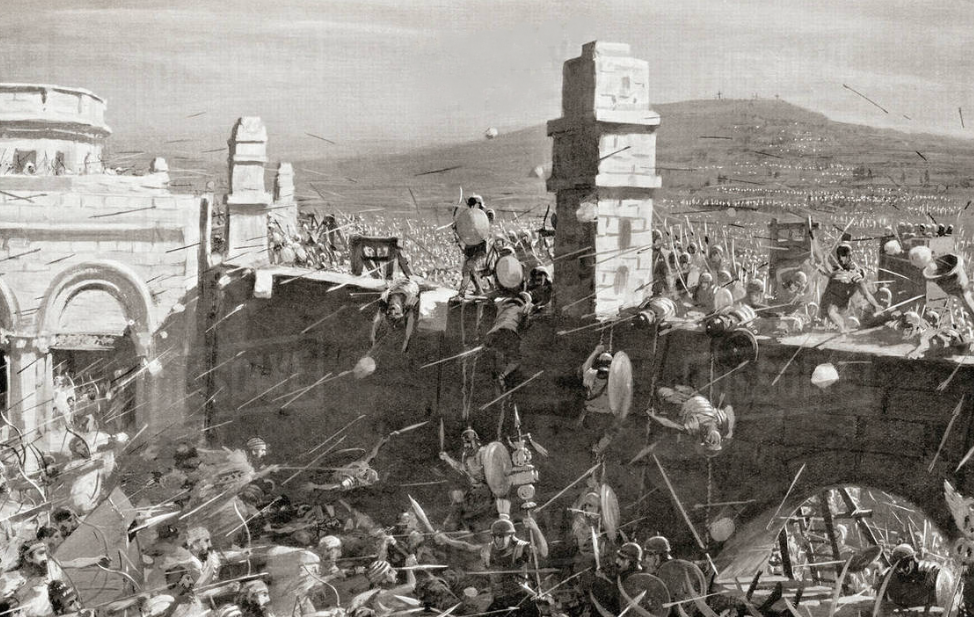The Times of the Gentiles

“For these are the days of vengeance, that all things which are written may be fulfilled. But woe to those who are pregnant and to those who are nursing babies in those days! For there will be great distress in the land and wrath upon this people. And they will fall by the edge of the sword, and be led away captive into all nations. And Jerusalem will be trampled by Gentiles until the times of the Gentiles are fulfilled” (Luke 21:22–24).
Many Christians believe we have been living in the “times of the Gentiles” for the last 2000 years. Steve Gregg of The Narrow Path, for example, says it refers to “the action of God saving Gentiles after AD 70.”[1] Gregg believes that God, for the last 2000 years, has been primarily focused on saving Gentiles—as opposed to Jews. But one day, at the end of time, God will judge the Gentiles, just like he did the Jews back in AD 70. “The Jew first…and also the Greek,” says Gregg.
But is that really what the “times of the Gentiles” refers to? I don’t think so for a number of reasons.
First, in the Luke passage cited above, right after mentioning the “times of the Gentiles,” Jesus went on to say it would happen within “this generation”—not for a protracted (2000+ year) period of time:
“Jerusalem will be trampled by Gentiles until the times of the Gentiles are fulfilled…Assuredly, I [Jesus] say to you, this generation will by no means pass away till all things take place” (Luke 21:24–32).
Jesus specifically said ALL THESE THINGS—including the destruction of the temple (Luke 21:5–6), the destruction of Jerusalem (v. 20), and the times of the Gentiles (v. 24)—would happen within “this generation” (v. 32). A biblical generation equates to around forty years (Heb. 3:8–10, Num. 14:30–34, Neh. 9:21), which means all these events must have happened in the first century.
Second, this timing matches perfectly with the timing Revelation gives too:
“Then I was given a reed like a measuring rod. And the angel stood, saying, “Rise and measure the temple of God, the altar, and those who worship there. But leave out the court which is outside the temple, and do not measure it, for it has been given to the Gentiles. And they will tread the holy city underfoot for forty-two months” (Rev. 11:1–2)…“Do not seal the words of the prophecy of this book, for the time is at hand” (v. 22:10).
Same temple (Luke 21:5; Rev. 11:1–2). Same city of Jerusalem (Luke 21:20; Rev. 11:1-2). And same treading down of the city by Gentiles (Luke 21:24; Rev. 11:2). This is clearly the same event!
And the timing fits perfectly too. Jesus said in approximately AD 33 that it would happen within “this generation” or by around AD 70 (Luke 21:32); and Revelation said in AD 65 that this event was “at hand” (Rev. 22:10), which means it was about to happen. This timing matches perfectly.
Third, notice, also, that Revelation says it would last for “forty-two months” (three-and-a-half years):
“Then I was given a reed like a measuring rod. And the angel stood, saying, ‘Rise and measure the temple of God, the altar, and those who worship there. But leave out the court which is outside the temple, and do not measure it, for it has been given to the Gentiles. And they will tread the holy city underfoot for forty-two months” (Rev. 11:1–2).
This three-and-a-half-year length of time fits perfectly with the Jewish-Roman War, which began in the spring of AD 67, and culminated in September AD 70 with the destruction of Jerusalem and the temple. According to the first-century historian Josephus, more than one million Jews were killed and another 97,000 were taken into slavery. Jerusalem was trodden down by the Romans (Gentiles) for forty-two months, just as Jesus and John (Revelation) warned. This was the times of the Gentiles.
In fact, the Greek word “patoumenē” (which is translated “treading down” in Luke 21:24) is a derivative of “pateó,” which primarily means “to tread or trample underfoot. It conveys the action of walking or stepping on something, often with the implication of dominance or destruction.”[2] In other words, it refers to “active military warfare,” says Don Preston, President of the Preterist Research Institute.
This definition fits nicely with the Romans treading down the Jews during the three-and-a-half year Jewish-Roman War of AD 67-70. This was the “times of the Gentiles.”
Note: Do not confuse the “times of the Gentiles” with the “fullness of the Gentiles,” which refers to the Gentile/Jew equality. For more about this topic, please see my article The Fullness of the Gentiles.
For more detailed information about the topics discussed in this article, get my book The End Is Here: How the New Testament Prophecies Were Fulfilled, available now on Amazon.
By Alex Polyak, Director of The Bible Fulfilled, 4/17/25
[1] Steve Gregg v. Don Preston debate called “Full Preterism,” part #14, 11:00. Viewed on The Narrow Path, 4/14/25.
[2] Stong’s Lexicon #3961
